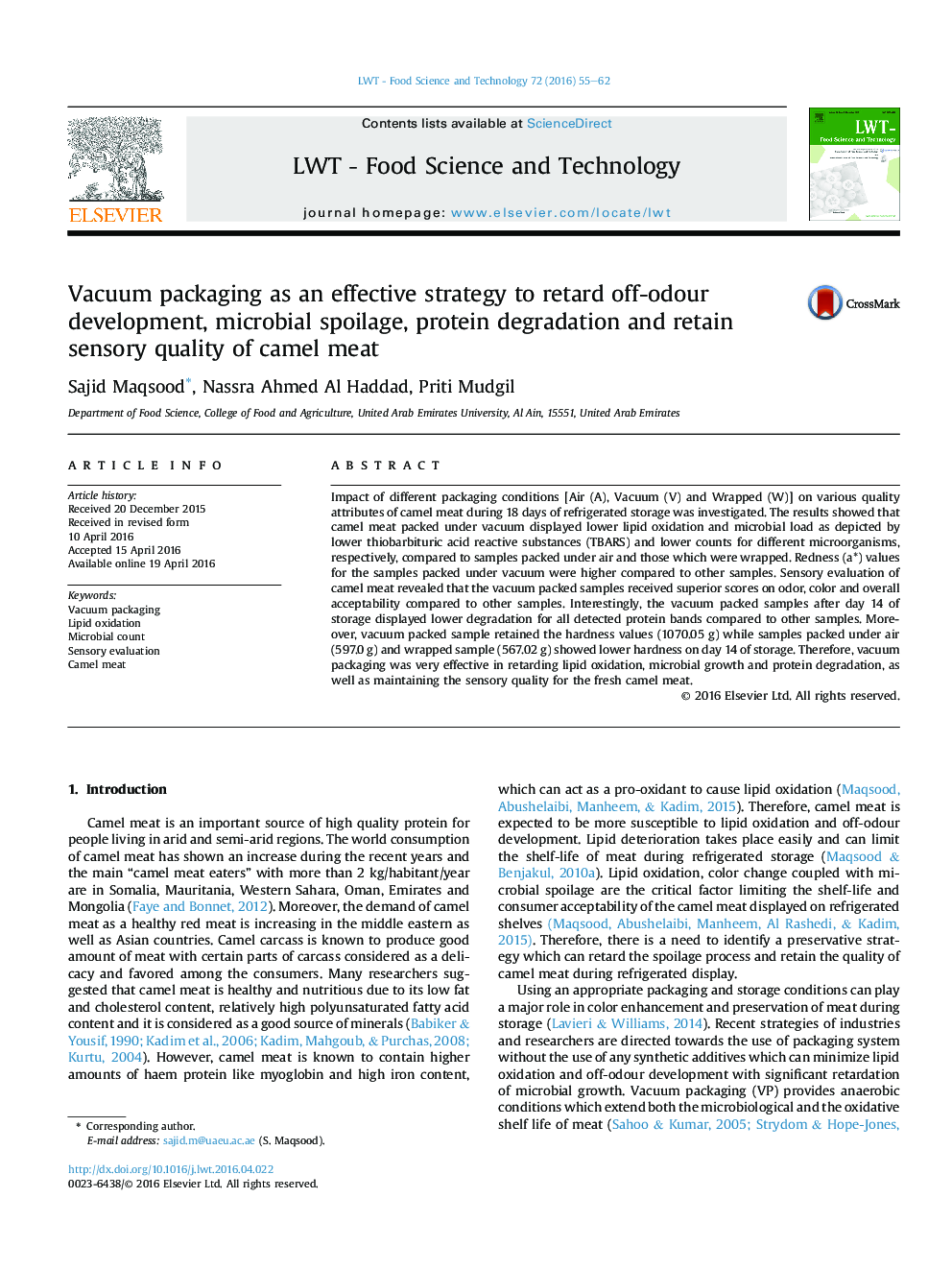| کد مقاله | کد نشریه | سال انتشار | مقاله انگلیسی | نسخه تمام متن |
|---|---|---|---|---|
| 4563257 | 1628525 | 2016 | 8 صفحه PDF | دانلود رایگان |
• Lipid oxidation and associated off-odor was lower in vacuum packed camel meat.
• Vacuumed samples displayed superior overall acceptability in sensory evaluation.
• Microbial counts were also lower in vacuum packed camel meats.
Impact of different packaging conditions [Air (A), Vacuum (V) and Wrapped (W)] on various quality attributes of camel meat during 18 days of refrigerated storage was investigated. The results showed that camel meat packed under vacuum displayed lower lipid oxidation and microbial load as depicted by lower thiobarbituric acid reactive substances (TBARS) and lower counts for different microorganisms, respectively, compared to samples packed under air and those which were wrapped. Redness (a*) values for the samples packed under vacuum were higher compared to other samples. Sensory evaluation of camel meat revealed that the vacuum packed samples received superior scores on odor, color and overall acceptability compared to other samples. Interestingly, the vacuum packed samples after day 14 of storage displayed lower degradation for all detected protein bands compared to other samples. Moreover, vacuum packed sample retained the hardness values (1070.05 g) while samples packed under air (597.0 g) and wrapped sample (567.02 g) showed lower hardness on day 14 of storage. Therefore, vacuum packaging was very effective in retarding lipid oxidation, microbial growth and protein degradation, as well as maintaining the sensory quality for the fresh camel meat.
Journal: LWT - Food Science and Technology - Volume 72, October 2016, Pages 55–62
